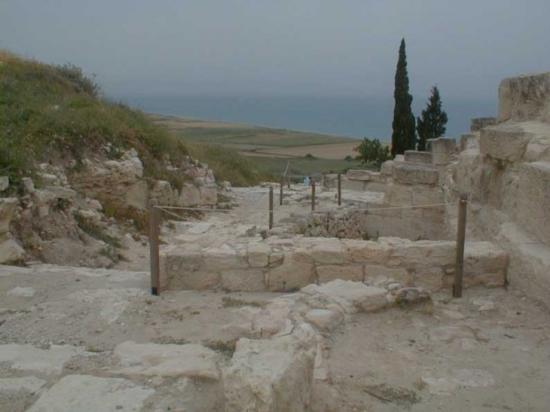Department of Antiquities
Source - http://www.moi.gov.cy/moi/pio/pio.nsf/All/D448AB51452665C9C2257D34004194B2?OpenDocument

The Department of Antiquities, Ministry of Communications and Works, announces the completion of the 2014 excavation season of the Kourion Urban Space project (KUSP) under the direction of Dr. Thomas W. Davis of the Tandy Institute for Archaeology at Southwestern Baptist Theological Seminary in Fort Worth Texas, USA; Dr. Davis was formerly the Director of the Cyprus American Archaeological Research Institute in Nicosia from 2003-2011.
This year’s excavations uncovered the remains of more victims of the massive earthquake that destroyed Kourion in the fourth century A.D. Initial analysis indicates the remains consist of two adults, a juvenile, and an infant. The family was found huddled together trying to protect one another; the infant was found under the right arm of one of the adults. They took cover in the corner of a room, outside a doorway, but their precautions were of no avail as they were killed by the collapse of the large stone walls of a residence partially uncovered by the current excavations. The bones were badly crushed and, in some instances, found directly under collapsed architectural stones.
The site of this tragedy was inside what may have been an elite house based on the costly material culture, the monumentality of the architecture, and the expensive decorative materials such as gypsum flooring and marble facing that once adorned the architecture. Potentially two stories high, the floor plan is not yet complete and awaits further investigation. The house was rich in material cultural remains. Fragments of a large imported glass plate were found around and under portions of the earthquake tumble. The plate was manufactured from bundles of hollow yellow glass canes which were fused together in a dark green matrix. These plates are made in Egypt, and are usually found in Coptic cemeteries. The Kourion plate provides what may be the best dated example in the world. A large marble vase, numerous additional highly decorated glass fragments, and fineware ceramics indicate the wealth of the household. Ceramic analysis by the KUSP team including Dr. Scott Moore of Indiana University of Pennsylvania indicates a mid-fourth century date for the tragedy. This has been supported by the numismatic analysis of the coins from the building by the KUSP numismatist, Dr. Paul Keen of the University of Massachusetts (Lowell).
KUSP has completed the third season of a long-term archeological investigation at the site of Kourion, Limassol District. KUSP partners include the Australian Institute of Archaeology, the University of Cyprus, the Cyprus Technical University and the Western Sovereign Base Area Archaeology Society. Students from the seminary were joined by students and volunteers from the consortium partners and from the University of Cincinnati (USA), Arizona State University (ASU), the University of Palermo (Italy) and the University of Durham (UK). More than 20 local volunteers also assisted in the excavation of the site and the processing of the material remains.